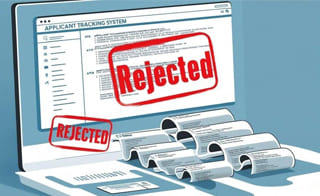Applicant Tracking System (ATS) software has quietly become the control‑centre of hiring. In fact, more than 90 % of large employers rely on an ATS to screen, rank, and communicate with candidates before a human ever opens a résumé.
The message is clear: if your recruitment process still runs on email threads and spreadsheets, you’re already a decade behind.
How an ATS Works — Step by Step
- Job Requisition Sync – An ATS pulls approved jobs from your HR tech stack into one dashboard.
- Multi‑Channel Posting – Recruiters publish openings to job boards, socials, and careers sites with a single click.
- Resume Parsing & Candidate Tracking – Incoming applications are parsed, tagged, and stored in a searchable talent acquisition software database.
- Automated Screening – The AI‑powered ATS scores résumés against must‑have criteria to surface best‑fit profiles.
- Collaboration & Feedback – Hiring managers add structured notes directly inside the hiring software.
- Interview Scheduling & Workflows – Calendar links trigger automated invites; background checks fire via integrations.
- Reporting & Compliance – Dashboards track time‑to‑hire, source quality, and diversity metrics while creating audit‑ready logs.
Top 6 Business Benefits
- Faster Time‑to‑Hire – Organisations adopting recruitment automation cut fill times by 30–40 %.
- Lower Cost‑per‑Hire – Centralised candidate tracking removes duplicate advertising spend.
- Improved Candidate Experience – Automated status updates end the “application black hole.”
- Data‑Driven Decisions – Real‑time analytics show which campaigns and recruiters deliver results.
- Bias Reduction – Consistent scoring rubrics minimise unconscious bias.
- Stronger Compliance – Every résumé, note, and email is timestamped—critical for audits, especially for ATS in India labour regulations.
Common Myths (Busted)
- “Keyword stuffing gets me through.” Modern ATS software scores for context, not raw counts.
- “Only enterprises need an ATS.” Over 60 % of Indian SMBs adopted ATS tools in 2024 as SaaS prices dropped.
- “ATS reject great talent.” Poor configuration does. A well‑tuned, AI‑powered ATS plus human insight uncovers hidden gems.
Choosing the Right ATS: 7‑Point Checklist
- Core Functionality – Resume parsing, candidate tracking, automated workflows.
- AI Capability – Native AI or open APIs to plug in Ann—our AI Interviewer.
- Integration Ecosystem – HRIS, job boards, assessments, video.
- Reporting Depth – Custom dashboards for DEI, source ROI, recruiter productivity.
- User Experience – Mobile‑first portals for recruiters and candidates.
- Local Compliance – GDPR, CCPA, and emerging Indian data rules.
- Vendor Partnership – Implementation support, or enrich your pipeline with SearchMate.
Legacy Hiring vs. ATS‑Enabled Hiring
| Factor | Legacy Model | ATS-Enabled Model |
|---|---|---|
| Job Posting | Manual, one-by-one | One-click multi-posting |
| Resume Collection | Inbox overload | Central talent pool |
| Screening | Spreadsheet filters | AI ranking & scorecards |
| Time-to-Hire | 40–60 days | 20–30 days |
| Compliance | Paper trails | Digital audit logs |
| Candidate Experience | Limited updates | Real-time alerts |
Alt‑text suggestion: “Table comparing traditional hiring to ATS‑powered hiring on speed, cost, and compliance.”
Your Next Step
Ready to modernise hiring? Book a free ATS readiness audit with ProSapiens—we’ll benchmark your process, model ROI, and craft an implementation roadmap marrying world‑class hiring software with our AI interview platform.
Sources
- Forbes – 90 % of large employers use an ATS. cite turn0search0
- Appcast Benchmark Report – ATS users shave 30–40 % off time‑to‑hire. cite turn0search2
- Jobscan – Top ATS keywords of 2025 & context beats stuffing. cite turn0search1
